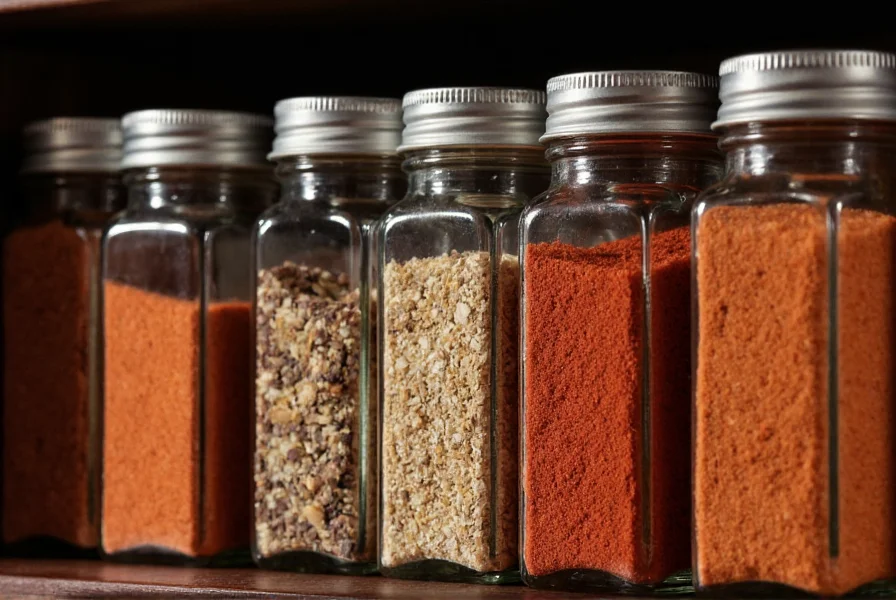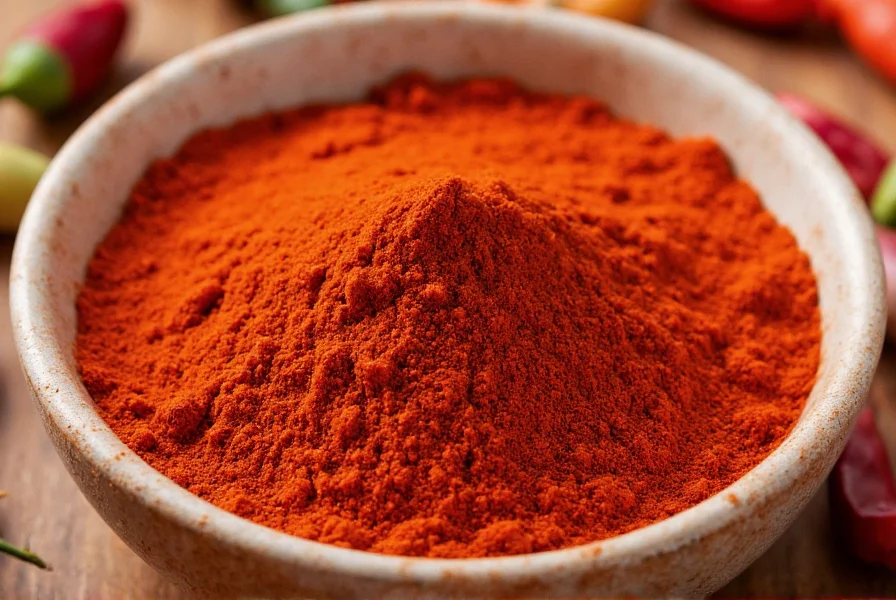Understanding the nuances of red pepper spice is essential for home cooks and culinary professionals alike. Unlike single-variety spices, most commercial crushed red pepper contains a blend of dried peppers including cayenne, ancho, and sometimes bell peppers, creating a more complex flavor profile than pure cayenne powder. This versatile seasoning adds both heat and depth to dishes without overwhelming other ingredients when used appropriately.
What Exactly Is Red Pepper Spice?
The term "red pepper spice" most commonly refers to what's labeled as crushed red pepper in American grocery stores. This coarsely ground mixture typically contains several varieties of dried red chili peppers, with the exact composition varying by brand and region. The most common components include:
| Component Pepper | Heat Level (SHU) | Flavor Profile |
|---|---|---|
| Cayenne | 30,000-50,000 | Sharp, immediate heat |
| Red Bell Pepper | 0 | Sweet, earthy base |
| Ancho/Chipotle | 1,000-2,500 | Smoky, fruity notes |
This blend creates a more balanced heat experience compared to single-pepper spices. The coarseness of the grind affects both flavor release and visual presentation in dishes—finer grinds incorporate more completely while coarser flakes provide texture and visible spice elements.
Red Pepper Spice vs. Similar Varieties
Many home cooks confuse red pepper spice with other red-colored seasonings. Understanding these differences prevents recipe mishaps:
- Crushed Red Pepper (red pepper spice): Coarse blend of multiple dried red peppers, moderate heat with complex flavor
- Cayenne Pepper: Usually a single pepper variety (cayenne), ground finer, consistently hotter (30,000-50,000 SHU)
- Paprika: Can be sweet, hot, or smoked; made from specific sweet peppers, generally milder (500-10,000 SHU)
- Red Pepper Flakes: Essentially the same as crushed red pepper; terminology varies regionally
A common misconception is that red pepper spice and cayenne are interchangeable. While both provide heat, their flavor profiles and heat distribution differ significantly. Substituting one for the other without adjustment can dramatically alter a dish's character.

Culinary Applications and Techniques
Mastering red pepper spice usage elevates everyday cooking. Professional chefs employ several techniques:
Dry Application Methods
Adding crushed red pepper early in cooking ("blooming" in oil) extracts maximum flavor and distributes heat evenly. For Italian dishes, many chefs toast flakes in olive oil before adding garlic to prevent bitterness. The oil carries both flavor and heat throughout the dish.
Finishing Applications
Adding red pepper spice at the end preserves its brighter, fruitier notes. This technique works particularly well for:
- Finished pizzas and flatbreads
- Roasted vegetables
- Avocado toast variations
- Marinara sauces
Substitution Guide for Red Pepper Spice
When your recipe calls for red pepper spice but you have alternatives available, consider these substitution ratios:
| If You Have | Substitute Ratio | Adjustment Notes |
|---|---|---|
| Cayenne Pepper | ⅓ amount | Provides more intense heat with less complexity |
| Hot Paprika | 1:1 | Milder heat with similar color; add pinch of cumin for depth |
| Chipotle Powder | ½ amount | Smoky flavor replaces fruitiness; best for Mexican dishes |
Remember that substitutions affect both heat level and flavor complexity. For the most authentic results, seek out proper crushed red pepper, which many specialty markets now carry in various heat levels from mild to extra hot.
Proper Storage for Maximum Freshness
Like all dried spices, red pepper spice loses potency over time. To maintain optimal flavor and heat:
- Store in an airtight container away from light and heat sources
- Keep away from the stove (heat degrades capsaicin faster)
- Use within 6-12 months for best results (mark purchase date on container)
- Freeze for long-term storage (up to 2 years) in vacuum-sealed bags
Test your red pepper spice's freshness by rubbing a small amount between fingers—if it releases minimal aroma or heat sensation, it's time for replacement. Fresh crushed red pepper should have a vibrant red color; fading indicates degradation.

Global Culinary Traditions Using Red Pepper Spice
While commonly associated with Italian cuisine in the United States, red pepper spice appears in culinary traditions worldwide:
- Italian: Essential in Arrabbiata sauce and on pizza
- Korean: Gochugaru (Korean red pepper flakes) differs but serves similar purpose
- Mexican: Used in some regional salsas and meat rubs
- Middle Eastern: Aleppo pepper offers similar function with distinct flavor
- Chinese: Tángjiāo (dried red chilies) used whole or crushed
Understanding these cultural variations helps home cooks authentically replicate international dishes. For example, substituting standard crushed red pepper for Aleppo pepper in a Middle Eastern recipe creates a noticeably different flavor profile.
Measuring Red Pepper Spice Accurately
Precise measurement prevents over-spicing disasters. Follow these professional techniques:
- Use measuring spoons designed for spices (not liquid measures)
- Lightly spoon flakes into measure without packing
- Level with straight edge (knife or credit card)
- When in doubt, start with half the recommended amount
- Add incrementally during cooking, tasting as you go
Remember that heat perception varies by individual and even by day—factors like hydration level and recent meals affect spice tolerance. Always adjust to personal preference rather than strictly following recipe measurements.











 浙公网安备
33010002000092号
浙公网安备
33010002000092号 浙B2-20120091-4
浙B2-20120091-4